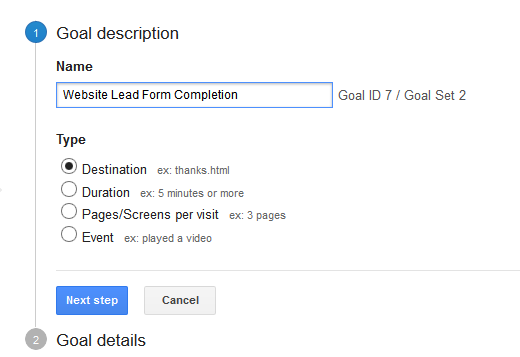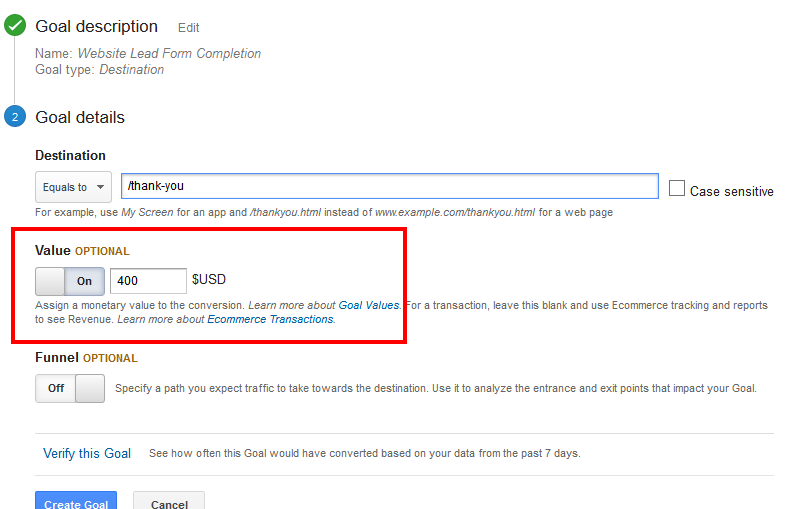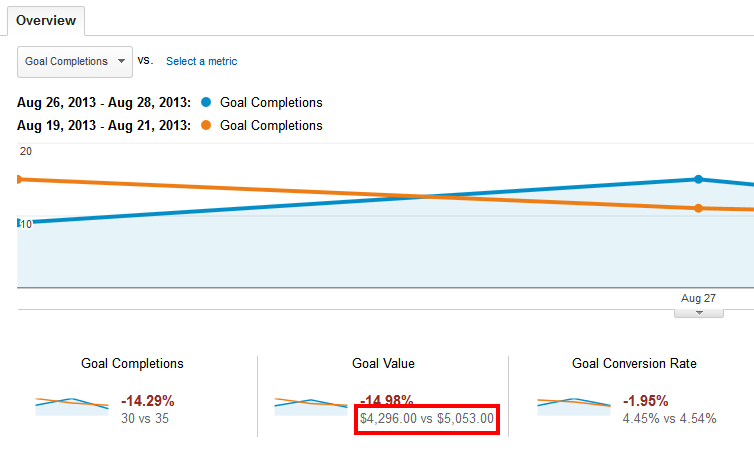Editor’s Note: This article was originally published by Web Marketing Today. Practical Ecommerce acquired Web Marketing Today in 2012. In 2016, we merged the two sites, leaving Practical Ecommerce as the successor.
If your lead-generation website is supported by paid advertising, it’s important to attach a value to each lead. In other words, to turn web analytics into a decision-making machine, as opposed to simply a visitor counter, you have to tell Google Analytics what your leads are worth to you.
The formula is total revenue generated from your web leads divided by the total number of leads your website has generated. If you’ve generated 500 web leads, and total sales based on those leads is $200,000, we can determine that each of those leads is worth, on average, $400.
$200,000 / 500 = $400 per lead.
Note that $400 is not exact. But it provides a baseline for digging into data deeper. You can more readily identify positive and negative trends, and more quickly visualize the impact of changes to your advertising and website.
To get this data into Google Analytics, you need to add or modify a Goal. In the Admin portion of your Google Analytics account, click on Goals in the right column.

Select “Goals” from the Google Analytics Admin section.
From here, create a Destination based goal, and name it appropriately to your business model. These names will appear on reports, so use a naming convention that will make sense immediately, and over the long haul.

Name your goal, which will show up in reports.
During step 2, you will tell Google Analytics what each of your “Website Lead Form Completions” is worth and where the Goal occurs, so to speak. Since the Goal is based on a visitor completing a form, it’s likely visitors will be sent to a “Thank You” page after finishing the forms. So for the purposes of triggering the Goal, enter the URL of your thank you page as the Destination.
The next box on Step 2 is listed as Value. Here’s where you enter “400” as the value of that Goal. The currency is listed however your Google Analytics account is set up. It generally defaults to U.S. dollars, for American accounts.

Enter the value of your Goal.
What to Do with the Goal Value Data
Once you’ve verified the Goal is working properly, you’re ready to do some real analyzing.
A good place to start is looking at your Google AdWords spend, and what the actual return on your investment is. Now, when you look at Advertising > AdWords > Keywords, you will see that Margin, Return on Investment, and Revenue per Click have accurate data based on your pre-determined Lead Value.

RPC, ROI, and Margin are more accurate in Analytics after setting up Goals.
Perhaps you’ll see that some of the keywords you had previously thought were profitable really aren’t, or better yet, you may find opportunities to increase your bid on keywords that work really well and still maintain a good margin and return on investment.
The example below shows how the results are now displayed in your Analytics account. Here are two keywords and the resulting numbers.

You see a more accurate overview after setting up Goals in Google Analytics.
All of this data likely existed in spreadsheets, your customer relationship program, or other places in your business. This process gives you an easier way of visualizing it.
Beware of Averages
You are using an average Lead Value to make these calculations. Averages are often flawed. Don’t take action every time you see a trend. Instead, use the analysis as reminders to always test ad copy, keyword bids, and landing pages.
Also, your business may provide more than one service. As such, you may wish to have two or more individual goals, all with their own thank you pages, Google Analytics Goals, and Lead Values. Not all leads are equal.
In determining your Lead Value, you may wish to remove outliers that impact the average. For example, if you complete 35 sales from those 500 leads, and one of those deals is worth 25 percent of your overall revenue, consider removing it from the calculation.
Most importantly, it’s critical to do what you think is best in determining that value. The closer it is to a “most likely” scenario, the better your Google Analytics data will reflect the true impact of your website.


